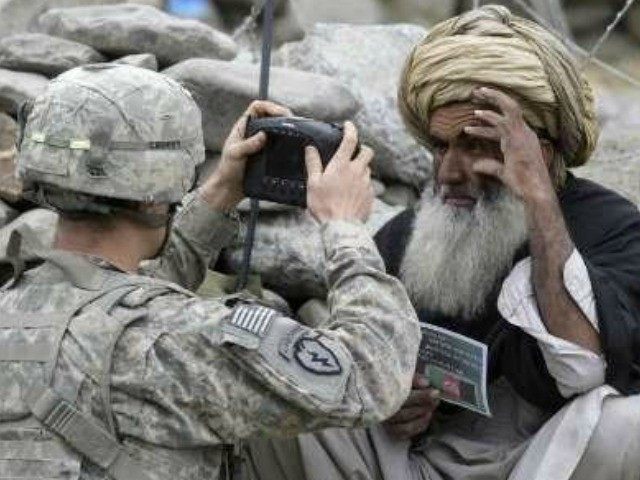The Special Inspector General for Afghanistan Reconstruction (SIGAR), a watchdog agency appointed by Congress, is unable to publicly report on most of the $65 billion U.S. taxpayer efforts to develop the Afghan National Security Forces (ANSF).
In an unprecedented move, the U.S-led forces in Afghanistan classified data concerning ANSF strength, salaries, training, equipment, infrastructure, anticorruption measures and other matters.
“The decision leaves SIGAR for the first time in six years unable to publicly report on most of the U.S.-taxpayer-funded efforts to build, train, equip, and sustain the ANSF,” explained Inspector General John Sopko in SIGAR’s latest quarterly report to Congress.
The bulk ($65 billion) of the estimated $107.5 billion in U.S. taxpayer funds that Congress has appropriated for Afghan reconstruction projects throughout the war has gone to support the ANSF, which includes army and police units.
U.S. Gen. John Campbell, the top commander of U.S. and NATO forces in Afghanistan, wrote a letter to Sopko on January 18 explaining why information that had been deemed unclassified in the past is now being treated as classified.
“With lives literally on the line, I am sure that you can join me in recognizing that we must be careful to avoid providing sensitive information to those that threaten our forces and Afghan forces, particularly information that can be used by such opposing forces to sharpen their attacks,” wrote Campbell.
Afghan security forces “are now responsible for the defense of Afghanistan and largely responsible for the defense of NATO and U.S. forces throughout the country… I have directed that sensitive operational information or related materials, that could be used by those who threaten the force, or Afghan forces, be classified at an appropriate level,” he added.
Late last year, military officials decided that information concerning the state of ANSF capabilities was classified. That data had previously been available to the public.
“Its inexplicable classification now and its disappearance from public view does a disservice to the interest of informed national discussion,” stated Sopko in SIGAR’s October 2014 quarterly report to Congress. “Moreover, while SIGAR understands that detailed, unit-level assessments could provide insurgents with potentially useful intelligence, there is no indication that the public release of aggregated data on ANSF capabilities has or could deliver any tactical benefit to Afghan insurgents.”
To some extent, the capability data remains classified. Only a broad summary of the capability assessments is now unclassified.
The majority (74 percent) of the 43 ANSF components assessed in October 2014 were rated as capable (58 percent) or fully capable (16 percent), according to information in the new inspector general report.
The ANSF capability metric was once again changed at the beginning of this year. It has been changed several times.
“Last quarter SIGAR expressed concern about [U.S.-led forces] decision to classify a key measure of ANSF capabilities, the executive summary of the Regional ANSF Status Report (RASR),” noted the inspector general.
This quarter, U.S.-led forces “went much further, classifying additional data that SIGAR has been using in every quarterly report for the past six years to discuss the progress of the ANSF, the [Ministry of Defense], and the [Ministry of Interior],” he added.

COMMENTS
Please let us know if you're having issues with commenting.